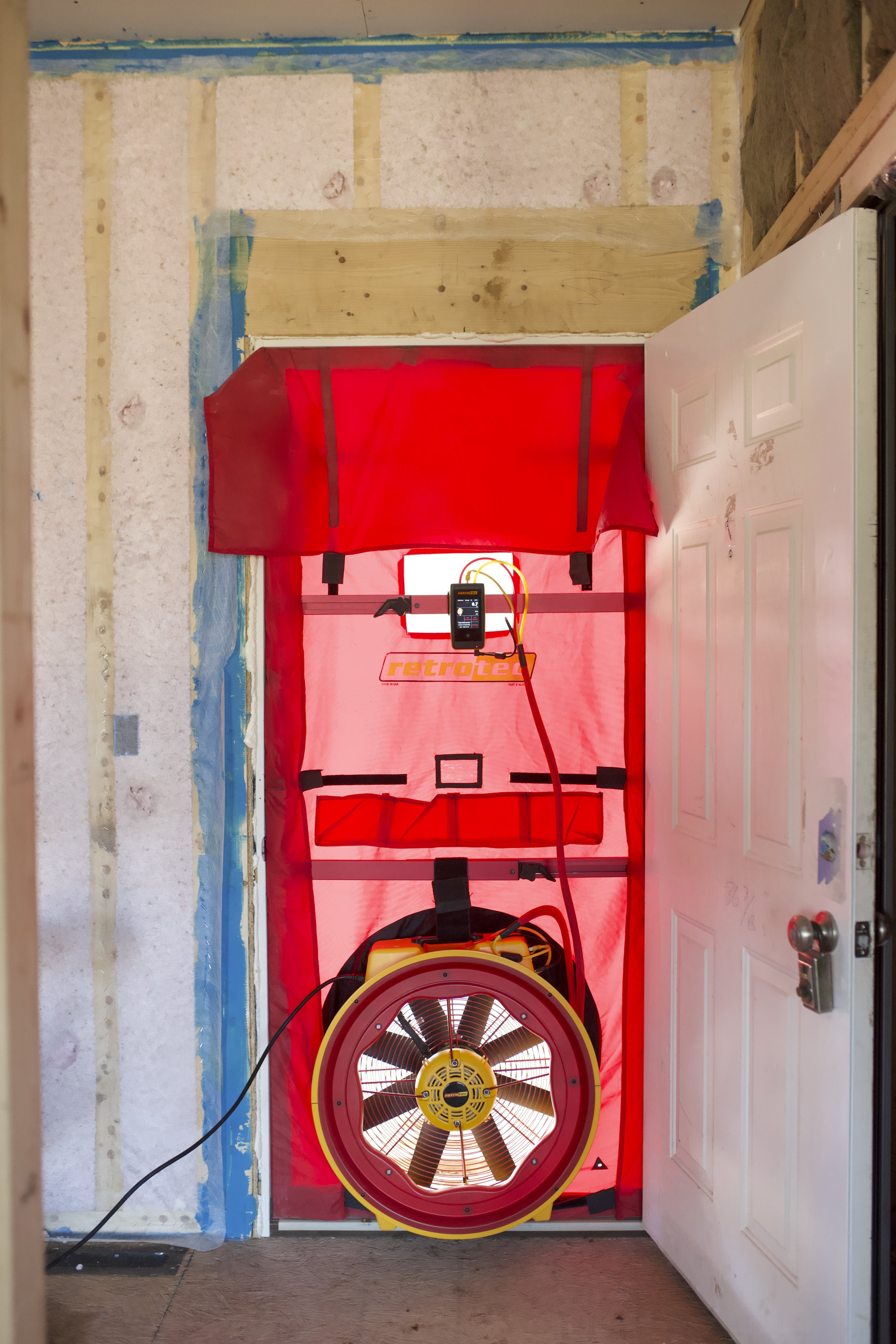Energy testing south carolina reveals these 5 silent performance killers
Energy testing south carolina reveals these 5 silent performance killers
Blog Article
How Energy Screening Can Lead to A Lot More Sustainable Living Solutions
Power testing is an essential tool for promoting sustainable living. It discovers ineffectiveness in energy usage within homes. Approaches such as energy audits and thermal imaging give valuable insights. Homeowners can determine locations requiring enhancement, from insulation to appliances. Resolving these inadequacies can cause significant power financial savings. Many remain unaware of the complete potential of these techniques. What steps can people take to enhance their homes and add to a more lasting future?
Understanding Energy Screening and Its Relevance

Typical Methods of Energy Screening
There are a number of common methods of power testing that house owners can utilize to examine their power performance (energy testing). One widely utilized strategy is the blower door test, which measures the air leakage in a home. By pressurizing the structure, it identifies breezy areas that may call for sealing. An additional approach is thermal imaging, where infrared electronic cameras detect temperature level variants in wall surfaces, ceilings, and home windows, highlighting insulation issues.Energy audits are also prominent, entailing a comprehensive evaluation of a home's power usage, usually carried out by a professional. These audits may include assessing heating and cooling down systems, home appliances, and total power consumption patterns. Additionally, clever energy meters can give real-time data on power use, aiding home owners comprehend their usage practices. With each other, these approaches provide useful understandings, enabling property owners to make enlightened choices regarding improving their power effectiveness and promoting sustainable living methods
Identifying Energy Inefficiencies in your house
Identifying energy inadequacies in a home is essential for homeowners aiming to reduce energy consumption and lower energy bills. Usual locations to evaluate include insulation, home windows, and appliances. Poor insulation can result in considerable warm loss in wintertime and unwanted warmth gain in summer, making heating & cooling systems work harder. Drafty windows add similarly, allowing conditioned air to get away and enhancing power demand.Additionally, obsolete home appliances usually take in more energy than their modern-day equivalents, additionally exacerbating inadequacy. House owners need to also consider the lighting system, as incandescent bulbs utilize more power compared to LED options.Regular upkeep of cooling and heating systems is important, as forget can lead to reduced efficiency. By systematically assessing these elements of a home, property owners can identify areas needing enhancement. Addressing these inefficiencies not only enhances comfort however additionally adds to an extra sustainable lifestyle by minimizing power waste.
The Duty of Power Audits in Sustainability
Power audits play an important role in promoting sustainability by supplying house owners with a substantial evaluation of their energy usage. These examinations determine locations where power is lost, allowing individuals to understand their consumption patterns and make informed decisions for renovation. By disclosing inadequacies in heating, cooling, insulation, and appliances, energy audits serve as a crucial tool for reducing overall power demand.Furthermore, they assist in the execution of energy-saving procedures, such as upgrading insulation or installing energy-efficient illumination, which can significantly reduce utility bills and decrease carbon footprints. The understandings obtained from a power audit equip house owners to prioritize sustainability in their living atmospheres. As more families participate in this process, the collective influence adds to wider environmental goals, promoting a society of energy consciousness and obligation. Eventually, power audits are fundamental to advancing sustainable living services, profiting both specific home owners and the atmosphere at large.
Cutting-edge Technologies for Power Performance
As homeowners progressively seek to improve their power efficiency, ingenious innovations are emerging to sustain these ventures. Smart home systems, furnished with sensing units and automation, permit home owners to check and manage energy consumption in real-time. These systems can readjust home heating, illumination, and air conditioning based on occupancy, therefore reducing waste.In addition, innovations in energy-efficient devices have actually made substantial strides. Tools such as ENERGY STAR-rated fridges and cleaning equipments consume much less power while providing suitable efficiency. In addition, the combination of renewable resource resources, like photovoltaic panels and wind generators, enables house owners to generate their very own power, lowering dependence on nonrenewable resources.Building materials have actually additionally developed, with options like protected concrete kinds and energy-efficient windows adding to minimized power loss. With each other, these cutting-edge modern technologies not just improve energy efficiency but also cultivate an even more lasting living atmosphere, empowering property owners to make impactful options in their energy consumption techniques.
Long-Term Conveniences of Lasting Living
While numerous may see sustainable living as a trend, its long-term benefits expand much past simple way of life options. Accepting lasting techniques results in significant reductions in carbon impacts, adding to a much healthier world. By reducing resource intake and prioritizing renewable power, people and neighborhoods can experience reduced energy expenses. This monetary relief can boost financial security over time, permitting reinvestment in various other essential areas.Furthermore, sustainable living cultivates more powerful community connections as people collaborate on neighborhood campaigns, promoting social communication. Health and wellness benefits likewise arise, as decreased air pollution and enhanced environment-friendly areas improve air high quality and total well-being. Furthermore, future generations will certainly inherit a much more lasting environment, making certain the availability of all-natural resources and biodiversity. Eventually, the long-lasting benefits of sustainable living encompass ecological, economic, and social dimensions, offering a compelling instance for individuals to adopt and keep these practices for the better good.
Steps to Apply Energy-Saving Solutions
Executing energy-saving remedies begins with a detailed analysis of power intake patterns to recognize areas for enhancement. As soon as these patterns are understood, individuals can identify energy-efficient upgrades that straighten with their requirements. Continual tracking and modifications to energy use assurance that these services stay effective in time.
Analyze Energy Intake Patterns

Assessing power intake patterns is an important action toward recognizing reliable energy-saving options. By methodically tracking usage across various times and organizations, individuals and home appliances can determine locations of excessive consumption. This analysis can expose peak use durations, enabling a much better understanding of when power needs are greatest. In addition, examining patterns enables contrasts between comparable home appliances, highlighting those that operate less effectively. Information collection methods, such as wise meters and power audits, offer valuable insights right into total power use. Identifying fads over time can aid in identifying seasonal variants and changes in usage practices. This foundational understanding is important for establishing targeted techniques that promote sustainable living and lower overall power expense.
Recognize Energy-Efficient Upgrades
To efficiently execute energy-saving services, identifying energy-efficient upgrades is vital for both home owners and organizations. This procedure starts with an extensive examination of existing systems, including heating and cooling systems, insulation, and devices. Upgrades may include mounting ENERGY STAR-rated home image source appliances, improving insulation, and making use of energy-efficient home windows. In addition, implementing wise thermostats can enhance home heating and cooling timetables, minimizing see this website energy usage. Shifting to LED lights is one more effective action, as it takes in considerably much less energy than standard bulbs. In addition, discovering renewable energy options, such as solar panels, can give lasting savings. Eventually, focusing on these upgrades not only contributes to minimized power costs but likewise cultivates a commitment to sustainability, benefiting both the setting and future generations.
Monitor and Adjust Usage
Tracking and changing power usage is essential for making the most of the advantages of energy-saving solutions. On a regular basis reviewing energy usage patterns permits organizations and individuals to determine locations for enhancement. By using clever meters and energy management systems, users can track real-time usage and find any kind of abnormalities that might indicate inefficiencies.Adjusting behavior, such as shutting off lights and advice unplugging unused gadgets, additionally enhances power cost savings. Additionally, scheduling home appliances to operate during off-peak hours can considerably lower costs.Conducting routine power audits assurances that carried out options stay effective over time. By actively participating in surveillance and changing methods, individuals can optimize their energy efficiency, add to sustainability initiatives, and inevitably minimize their environmental footprint.
Frequently Asked Questions
How Much Does a Power Audit Typically Cost?

Can Energy Screening Help In Reducing Energy Costs?
Power screening can markedly minimize utility costs by recognizing inadequacies in a home's energy usage. By addressing these problems, home owners frequently experience reduced consumption and expenses, causing even more economical power monitoring and enhanced monetary savings.
What Qualifications Should an Energy Auditor Have?
A power auditor need to have relevant certifications, such as RESNET or BPI, alongside experience in building scientific researches. air tight solutions. Solid analytical skills and understanding of energy efficiency techniques are necessary for carrying out accurate analyses and supplying efficient recommendations
Exist Government Incentives for Power Effectiveness Upgrades?
Federal government rewards for energy performance upgrades commonly exist, including tax obligation discounts, grants, and debts. These programs intend to encourage home owners and companies to buy energy-saving technologies, eventually advertising environmental sustainability and lowering overall power consumption.
Exactly how Frequently Should I Conduct Power Screening in My Home?
Energy screening must ideally be performed yearly to identify ineffectiveness. Property owners may think about extra constant evaluations after considerable renovations, adjustments in energy costs, or if uncommon drafts or temperature variations are discovered within the home. Energy testing enables the assessment of how well a home utilizes energy, pinpointing areas where waste occurs. Identifying energy inefficiencies in a home is vital for house owners aiming to minimize energy consumption and lower energy costs. Power audits play a crucial duty in advertising sustainability by giving home owners with a considerable assessment of their energy usage. By disclosing inadequacies in home heating, cooling, insulation, and appliances, energy audits offer as a critical device for minimizing general power demand.Furthermore, they assist in the execution of energy-saving procedures, such as upgrading insulation or installing energy-efficient lighting, which can considerably decrease energy expenses and reduce carbon footprints. Power screening can considerably reduce energy expenses by recognizing inefficiencies in a home's energy usage.
Report this page